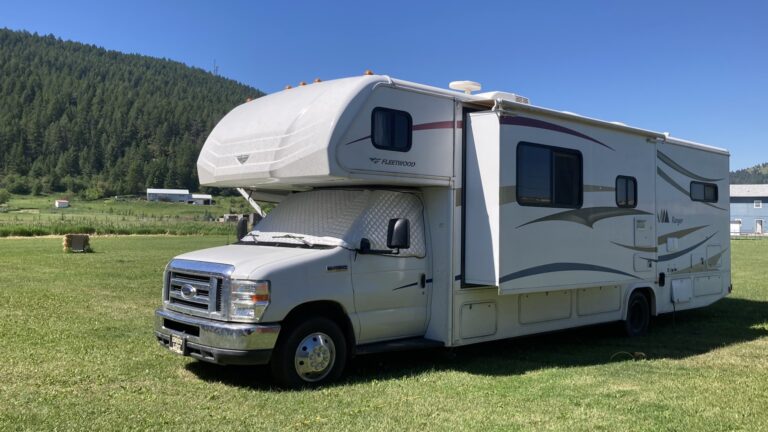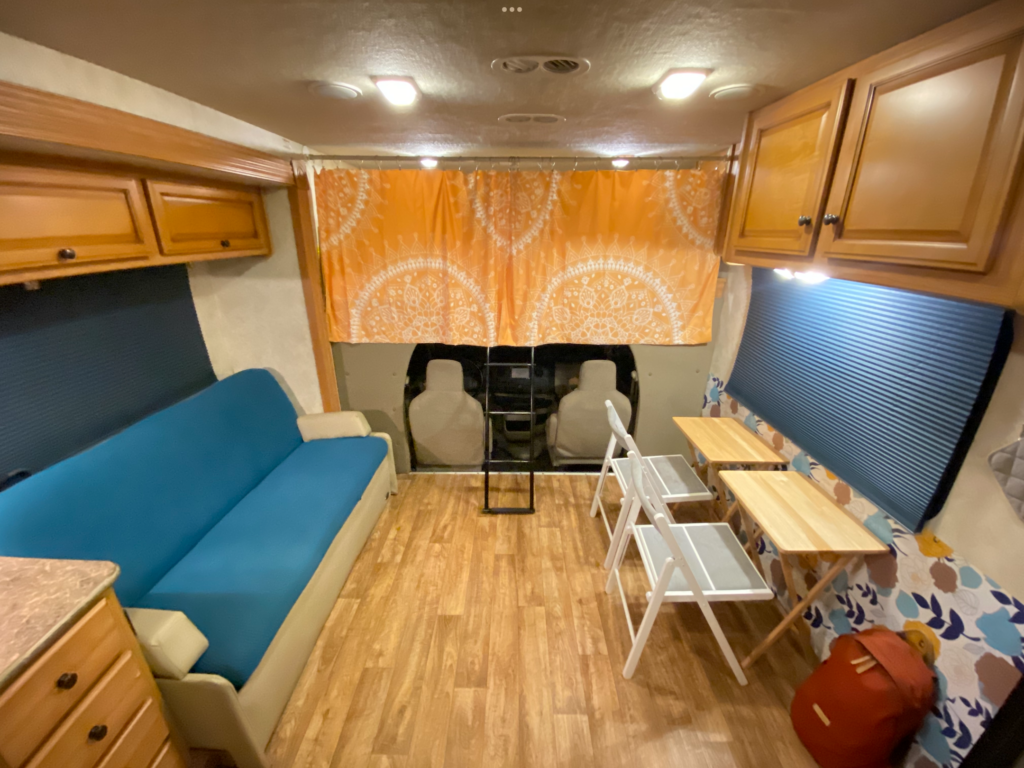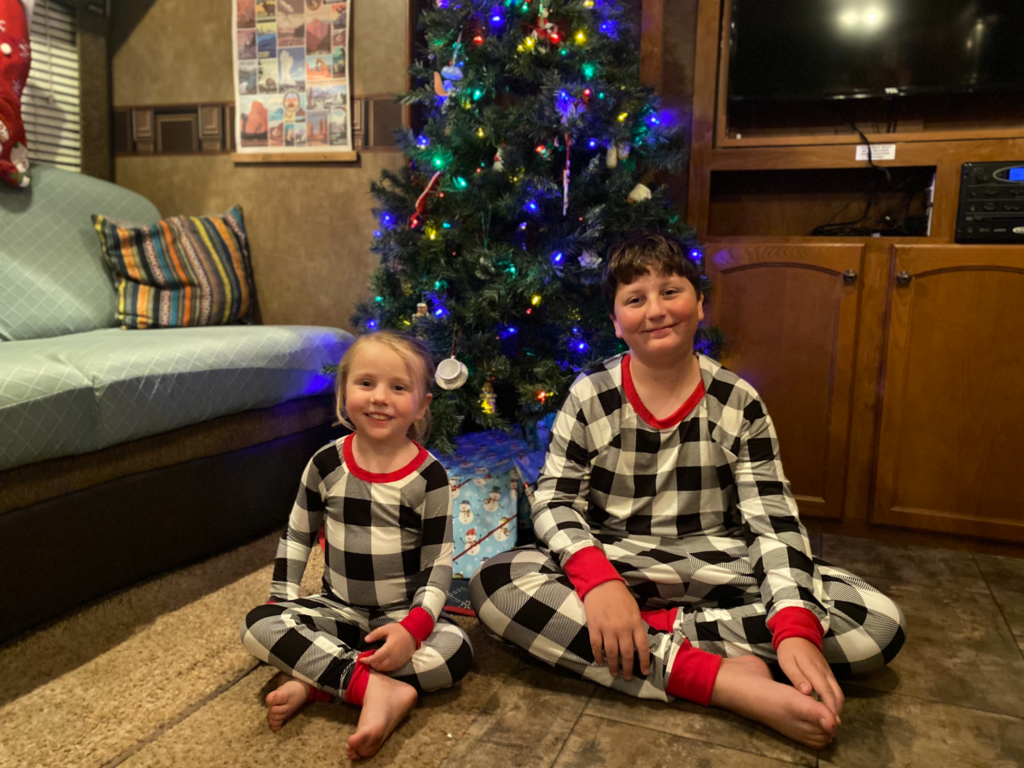
For the past several weeks, my family of four has been on the hunt for the perfect RV. Unlike the last time we bought an RV, we aren’t in any real hurry, meaning I’ve had plenty of time to carefully consider what it is we’re looking for. Having owned four RVs now, it was pretty easy to come up with a list, but I can see how someone with less RV experience might have a difficult time choosing the perfect family RV. That’s why I’m here today.
In this article, I will discuss all of the things we have considered as we’ve shopped for the ideal new rig to call home. Hopefully this information helps you choose the right RV for you and your travel crew.
New vs Used
The first thing you need to ask yourself is whether you prefer a new RV or a used one. Because we don’t like to be in debt if it can be helped, we always buy used. That said, there are pros and cons to both.
New RV Pros
- Fresh from the factory with nobody else’s messes or mistakes
- May come with a warranty
- Newer features and floor plans available
New RV Cons
- Much more expensive than used
- Some older floor plans are no longer available
- May have kinks to work out
Used RV Pros
- Much cheaper than a new RV
- Can choose an older floor plan if desired
- All new RV kinks will be worked out
Used RV Cons
- Typically, used RVs do not include a warranty
- Newer features will have to be added aftermarket
- May be messy or come with less-than-professional repairs

Choosing an RV Type
Beyond deciding whether you’d like to buy new or used, you’ll also need to figure out which type of RV works best for your family. My family knows we want another motorhome. We’ve had one motorhome and three different trailers at this point, and the motorhome was so much easier on travel days—not to mention ideal for boondocking thanks to the onboard generator—that we know it’s the direction we want to go again.
All that said, there are pros and cons to every type of RV, and you really have to consider your family’s need to figure out which might work best for you before you buy an RV.
Class B
I adore class B RVs (aka campervans). Really, I do. That said, unless you’re going to spend a very limited amount of time in your RV, a campervan probably is not the rig for a family. While there are vans on the market that seat and sleep 4, they are much smaller than other types of RVs and are going to feel cramped.
The major benefits? Vans are perfect when you need a small rig that sips gas (rather than guzzling it), can fit in tight places, and can easily go off-grid.
Class C
My family is on the hunt for a class C. These are the RVs that look a lot like moving trucks, typically with a bed that sits above the cab area. They drive much like a truck too—or a large van, which makes sense since they’re often built on a van chassis—and starting around 2007 or so, we started to see class Cs hit the market with bunk beds in addition to the over-cab bunk.
We had one of those bunk bed class Cs a year or so ago, and that is what I really hope to find again because the layout just worked for us.
The cons of a class C? Well, the gas mileage isn’t great, but better than some other options. Additionally, the cargo carrying capacity in these rigs tends to be pretty low.
Class A
Class A RVs tend to be bigger than class C RVs, and I find that a little bit intimidating. That said, I am open to the idea of buying a class A if the right one comes along in our price range. There are class A rigs out there with bunk beds, and I absolutely think we could make that work. A class A would likely give us a little more room to spread out as well, something that I wouldn’t be opposed to.
The major drawbacks of having a class A include having it worked on (it can be difficult to find a mechanic to work on a class A) and gas mileage.
Foldable Camper
Foldable campers—like pop-ups, A-frame campers, and hybrid campers—are neat because they are small and lightweight, meaning they are relatively easy to tow, but they open up to provide decent-sized living spaces.
I think these types of campers are ideal for families who’d like to be able to tow using their existing SUV or minivan, especially those who only plan to camp on weekends and the occasional vacation, and not live in it full time.
Travel Trailer
Travel trailers hitch to the bumper of a tow vehicle. Aside from the foldable versions mentioned above, these are hard-sided trailers, some with slideouts and some without. They come in a wide variety of sizes, from tiny little 12-foot trailers to large 33- or 34- foot rigs.
Many families find that a travel trailer is the most budget-friendly way to jump into the world of RVing. Unfortunately, travel trailers do not tend to be as well-made as motorhomes.
Fifth Wheel
Finally, there is the fifth wheel. This is another towable RV, but instead of hitching to the bumper of your vehicle, it hitches inside the bed of your truck. Fifth wheels tend to be larger than travel trailers, with higher ceilings. Many people feel that fifth wheels are also more solid than travel trailers.
An enormous number of full time RVing families have fifth wheels because they appreciate the large living space. That said, owning a fifth wheel will almost always require you to own a one-ton truck to tow it, and that isn’t something I’m willing to do.
Features to Look For in a Family RV
Once you know which type of RV you’re looking for, you’ll need to think about floor plans and amenities. Obviously, the things that are most important to you may be different from the things that are most important to me, but I think the features below are important things to consider when you buy an RV for a family, no matter who you are.
Sleeping Accommodations
Obviously, you’ll need to make sure everyone in your family has a place to sleep. In my opinion, it is important that every single person has a dedicated sleeping space, meaning a bed that doesn’t double as a couch or dinette. That said, if we only used the RV occasionally, I might have a different opinion.
Storage Space
If you’ve ever been RVing before, you already know how much stuff is required. Add in the extra stuff that kids and babies need and you have a whole lot of things to carry in the RV.
For this reason, it’s incredibly important that you take a look at the storage space in every RV you are considering. Think about where you’ll keep food, dishes, toiletries, and clothes, and make sure there is plenty of underbelly storage as well.
Bathrooms
Most RVs come equipped with at least one bathroom. Think about what you want the bathroom to look like. Do you need a bathtub for a little one? Is a certain kind of toilet a must-have? You may also want to consider whether more than one bathroom is necessary. We’ve never found a second bathroom to be a necessity when traveling with four people, but I could see a larger family appreciating an extra half-bath.
Counter Space
This is a big one for us right now. Most of the class C RVs with bunk beds have very, very limited counter space. Since we have a coffee grinder and espresso machine that live on the counter, and an Instant Pot and air fryer that we use regularly, limited counter space is going to be hard for us to work with.
Think about (1) the appliances you use and (2) how much prep work your meals tend to require of you to determine how much counter space you need.
Floor Space
Floor space is also something to consider. Because I teach online dance classes out of our RV, this is an especially important one for us, but really, having a decent amount of floor space will make long trips in the RV more comfortable for any family.
Take a look at the layout of the RV you’re looking at. Is there room for two people to slip by each other in most areas? If not, are you okay with feeling cramped while in the camper?
Flooring
I hate carpet in RVs. I always have, and yet two of our four RVs have had it. The thing is, carpet attracts dirt and holds onto it, and it’s hard to clean properly. On top of that, spills that can be wiped off of vinyl flooring will stain carpet. While I won’t say I’ll never buy another RV with carpet (because I will if I like everything else about the rig), I do recommend avoiding carpet when possible.
Amenities
Finally there are the extra amenities to consider. These are things like laundry machines, dishwashers, and ladders to climb onto the roof with (three things I’d love to have). The list of amenities that are must-have items will vary from one family to the next, but it is a good idea to think about what amenities you want to have and make a list of those before you ever even begin RV shopping.

Other Considerations
RV types, floorplans, and amenities are all important things to think about, but here are a couple of other considerations you’ll want to make before you buy an RV.
Seatbelt Safety
Seatbelt safety is important. No matter which rig you choose, make sure you have a way to safely buckle in every member of your family. Many feel that it is unsafe for children to ride in motorhomes, so you may want to consider driving a second vehicle in order to avoid this. If you go the towable route, you will need to choose a tow vehicle that will seat everyone safely, or again drive a second vehicle.
Our family chooses to ride in our truck together when towing a trailer, but once we have a motorhome, we will likely drive separately.
Where Will You Go?
Where will you go in your RV? Do you plan to do a lot of boondocking? If so, a camper van or class C may be your best bet. Meanwhile, those who plan to spend the majority of their time in luxury RV parks might prefer a fifth wheel or class A. Will you be heading to national parks? The campgrounds in these parks tend to have length restrictions, meaning you will need to pick a shorter rig.
Think about where you want to go and how you want to camp before you buy an RV, as this might affect your decision.
As an example, my family loves to boondock in the middle of nowhere. Our travel trailer makes this difficult, but our class C did fairly well with boondocking. Therefore, we are hoping to get something similar to what we had before, so we can enjoy off-grid camping once again.
Try Before You Buy
Whether you feel confident in what you’re looking for or still feel a bit unsure, we always recommend trying before you buy whenever possible. The best way to do this? Rent the RV (or RVs) you’re thinking about buying! This gives you a chance to take a rig out and actually use it for a few days so you can figure out whether it works for you. If it doesn’t work, it’ll also give you a better understanding of what you don’t want.
Well, I’m off now to continue my hunt for the perfect RV for our family. Hopefully this guide helps you on your search for a rig that will work for you, so you can hit the road sooner rather than later and start making memories that’ll last a lifetime!






